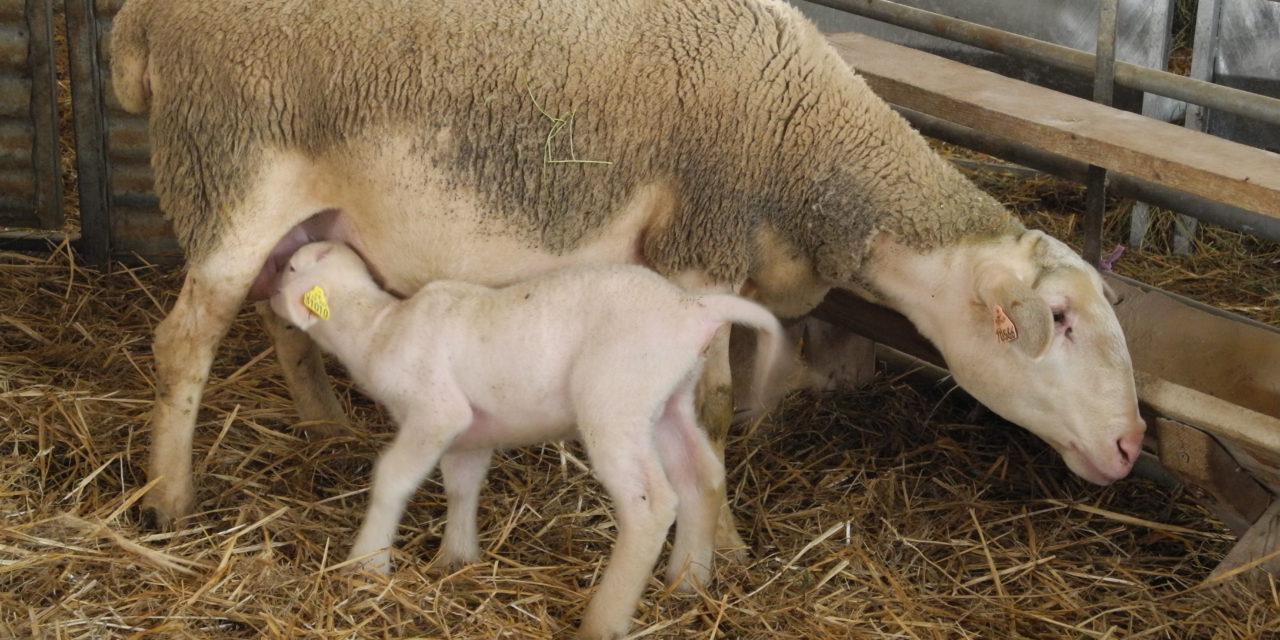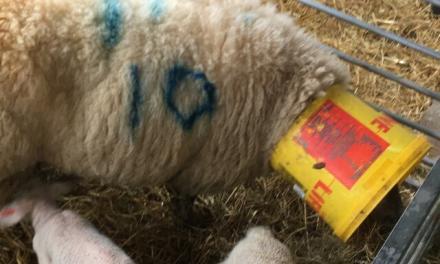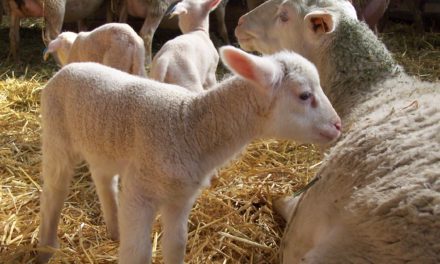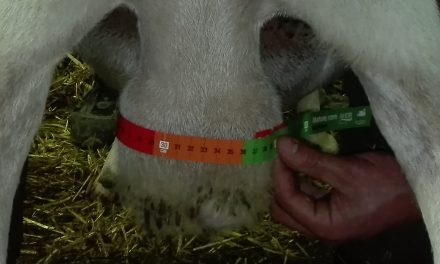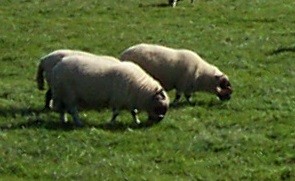This post is also available in:
![]()
![]()
![]()
In search of an ideal milk-replacer in small ruminants
Need / Issue: knowledge of nutritional requirements
Introduction:
In intensive small ruminant dairy farming, after birth, lambs and kids are removed from the dam at birth or after 24-48 hours, following colostrum intake.
From this moment on, the lambs and kids are reared in a system of artificial lactation, being the choice of the milk-replacer a fundamental factor in their growth, development and health.
Milk-replacers are breast milk replacers that provide the necessary nutrients for lambs and kids during the first weeks of life. Their formulation requires knowledge of the nutritional value of their ingredients to meet the needs of the pre-breeder. Knowing how to choose the right milk replacer is fundamental to maximize the genetic potential of the animals and minimize economic costs.
Search for the ideal milk-replacer for lambs
| The Challenge |
Choosing the right milk-replacer is essential to maximize the genetic potential of the animals and minimize economic costs and time of use.
| Current Knowledge |
All milk-replacer must have some minimum characteristics that can be summarized in three:
- Good solubility, easy to dilute in water.
- Good digestibility, so that the new-borns gets the most out of every gram it takes, taking into account its particular and delicate digestive system.
- Rich in nutrients, to cover the needs in the first and fundamental weeks of life.
In addition to being economically competitive in the market.
In the market there is a wide range of products with different composition:
0 milks, milk does not enter into their composition, usually include whey, and require other raw materials to reach the desired levels of crude protein (PB). The milks do not form rennet in the animal’s stomach, are fast-transiting and concentrate their digestion in the final tracts of the small intestine.
Milks of 60, 60% of their composition is skimmed milk powder. They form rennet in the animal’s stomach and their digestion is slow.
Intermediate milks. These are intermediate products between the two previous ones, both in composition and in utilization.
The formation of the coagulum is not indispensable. What is important is that the raw materials are highly digestible in the small intestine.
1.- Criteria for the choice of milk-replacer
The growth and development of lambs and kids raised on milk-replacer depends on several factors to be considered when choosing our product:
- a) Nutritional value. The product must provide the nutrients necessary for the animals to reach the target weight and conformation in the shortest possible time and cost.
Table 1. Composition and characteristics of milk-replacers
|
g/100 g DM |
Milks 0 | Intermediate | Milks 60 |
| Crude Protein | 23-24 | 22-23 | 23-24 |
| Crude Fat | 22-25 | 22-23 | 22-26.5 |
| Ash | 6.0-9.0 | 6-7.5 | 6.0-8.0 |
| Crude Fibre | 0.0-0.15 | 0.0-0.3 | 0.0-0.15 |
| Vitamin A, IUx1000 | 40-90 | ||
| Vitamin D3, IUx1000 | 2.0-1.0 | ||
| Vitamin E, mg | 60-300 |
What is better on a farm, 0 milks or 60 milks?
Yields with coagulating milks are always better than with 0 milks, but we must not forget that since they have a slower digestion, the handling and hygiene conditions of the facilities must be optimal.
The yields of the 0 milks are given by the type of protein used, so the yields can be good as long as we use quality raw materials and high digestibility in the small intestine.
In general, in the feeding of suckling lambs and kids, where the age at slaughter is less than 30 days and the carcasses must reach an optimum fat content, it is very important the growth rate and the efficiency of the milk-replacer, so it is recommended that its composition have skimmed milk powder at least 50%, and a sufficient fat content of 25%.
- b) Origin and quality of ingredients.
Protein sources
When evaluating the incorporation of a protein source, its amino acid profile and digestibility must be taken into account.
Protein digestibility is determined by its origin, dairy or non-dairy, knowing that the capacity of ruminants during the first weeks of life to digest non-dairy proteins is much reduced.
Table 2. Characteristics of the main protein sources
| Clottable | Crude Protein (%) | Casein (%) | Serum Protein (%) | Digestibility | ||
| Dairy origin | Skimmed milk | Yes | 34-36 | 80 | 20 | 96 |
| Buttermilk | Variable | Variable | Variable | Variable | Variable | |
| Lacto serum | No | 9.2-12 | 0.0 | 100 | 93 | |
| Serum delatosate | No | 20-25 | 0.0 | 100 | 92 | |
| Vegetable origin | Hydrolysed wheat | No | 80.0 | 95 | ||
| Soy Protein Concentrate | No | 66.0 | 76 | |||
| Soybean meal | No | 44-48 | 74 | |||
| Pea Protein Concentrate | No | 51.5 | 90 |
Energy sources
The energy and the quality of the energy source is the limiting nutrient for the efficiency of milk-replacers. Energy sources are provided by carbohydrates and fats.
Sources of carbohydrates
Lactose stands out among carbohydrates for its high digestibility in the young ruminant, since it breaks down into glucose and galactose, both of which are easily absorbed.
There are other sugars such as starches and sucrose, but it must be taken into account that ruminants are not able to degrade them efficiently until they reach the age of 30 days. Their incorporation should be limited to no more than 5-10%.
Table 3. Characteristics of the main sources of carbohydrates
| Lactose (%) | Carbohydrate (%) | Digestibility (%) | ||
| Dairy Origin | Skimmed milk powered (%) | 50 | 99 | |
| Lacto serum | 71 | 99 | ||
| Permeate serum | 82 | 99 | ||
| Vegetable Origin | Wheat starch | 86 | 95 | |
| Rice starch | 93 | |||
| Corn starch | 91 | 92 | ||
| Tapioca starch | 78 | |||
| Potato starch | 59 |
The digestibility of starches depends greatly on their origin (Table 3), with wheat starches being more digestible than rice, corn or potato starches.
Source of fat
Fats have twice as much energy as carbohydrates, so it is essential that the formula has a high fat content, but not just any fat. It is important that the fat is digestible, and the fatty acid profile has an important effect on digestibility and energy utilization.
Fat digestibility is better when fat sources have small fat globules, when they are rich in short chain unsaturated fatty acids (number of double bonds; C18:1>C18:0).
Table 4. Fatty acid profile of the main fat sources.
| Oil | ||||||
| Milk | Palm | Coconut | Soybean | Rapeseed | ||
| Fatty acids (%) | (<C8) | 5.4 | ||||
| Octanoic (8:0) | 1.4 | 7.8 | ||||
| Capric (10:0) | 3.3 | 5.9 | ||||
| Lauric (12:0) | 3.9 | 44.9 | 0.2 | |||
| Miristic (14:0) | 11.5 | 1.3 | 16.6 | 0.2 | ||
| Palmitic (16:0) | 29.1 | 42 | 11.5 | 10 | 45 | |
| Estearic (18:0) | 9.4 | 5.6 | 2.9 | 5 | 2 | |
| Oleic (18:1) | 22.3 | 41.1 | 8.6 | 21 | 55 | |
| Linoleic (18:2) | 2 | 9.1 | 1.6 | 53 | 22 | |
| Linolenic (18:3) | 0.2 | 8 | 9 | |||
| Arachidonic (20:0) | 0.3 | 0-0.5 | 0.5 | |||
| Gadoleic (20:1) | 0.1 | |||||
| Degree of unsaturation | Unsaturated (without double bonds) | 51 | 91 | 15 | 8 | |
| Monunsaturated (1 double bond) | 39 | 7 | 23 | 60 | ||
| Polyunsaturated Ꙍ-3 (several double bonds) | 10 | 2 | 54 | 20 | ||
| Polyunsaturated Ꙍ-6 (several double bonds) | 0.2 | 2 | 8 | 10 | ||
| Digestibility % | 97.5 | 95.1 | 95.5 | 94.9 | 94.9 | |
The main fat sources used in the formulation of milk replacers are palm oil and coconut oil. Coconut oil is preferred because of its fatty acid profile and higher digestibility.
Another advantage provided by the reduced size of the fat globules is the non-clogging of the nipple ducts and their easy cleaning.
Source of vitamins, minerals and other ingredients
At early ages it is important to cover the needs in vitamins and minerals, with special emphasis on Vitamin E due to its antioxidant function.
There are also other ingredients with different functions such as
Essential oils, Acidifiers (facilitate ad-libitum and cold use), Intestinal wall protectors, Immunity boosters, prebiotics and probiotics.
- C) Manufacturing process.
It determines the degree of solubility, digestibility and nutrient richness.
The size of the fat globule depends on the fat source, but also on the manufacturing process of the milk-replacers.
There are two processes for refatting of milk replacers
Dry process
This process involves the protein and lactose being enveloped by globules of approximately 20 µm.
The product obtained by this system has a poorer dissolving capacity and a higher risk of oxidation due to a greater amount of free fat.
Wet process
The wet re-fatting and low temperature “spray” drying process achieves that the fat globules are microencapsulated by the lactose and protein, and have a size of less than 20 µm.
Products manufactured this way tend to have better solubility and digestibility.
|
Terms and conditions of use |
Although it is true that the solubility of milk replacers allows them to be reconstituted at low temperatures, it is recommended to do it between 45-60º C, for a better homogenization of the product.
In addition, to maintain a correct handling, 1 teat for every 10 lambs or kids, daily hygiene and disinfection of the wet-nurse and its components, since they are key to obtain optimum performance and health of lambs and kids in the farm.
Topic: nutrition
Production: Dairy
Animal Category: Lamb

